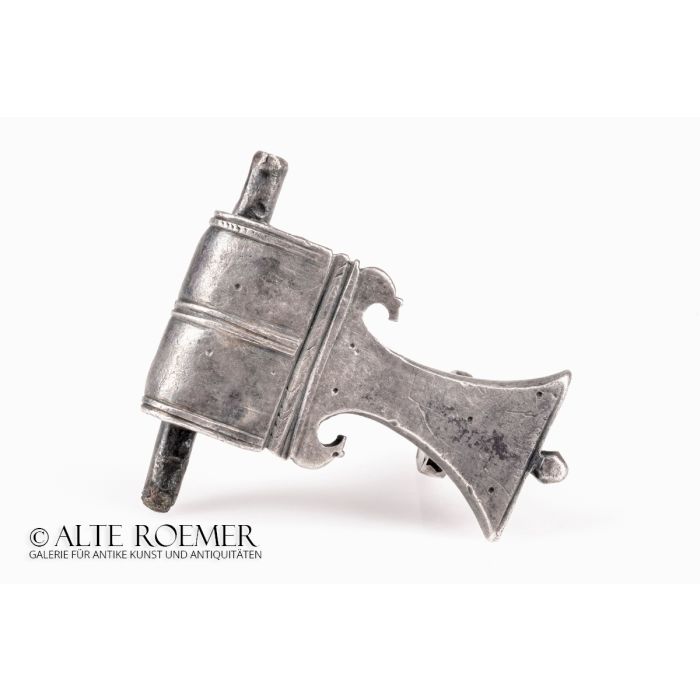Roman silver fibula
Price: on request
Sold
Object number
AR3050A
| Object: |
Roman fibula
|
| Material: |
Silver.
|
| Period: |
Roman Imperial period. 1st cent. AD to 3rd cent. AD. |
| Description: |
The Roman silver brooch has a broad head in the form of a rectangular curled plate. Decorative lines in longitudinal direction on the edges and in the middle of the plate. The foot consists of an attached tapered rectangle, the side towards the head is bent down to form an anchor shape. The fibula ends with a small decorative knob. The needle was attached to a crossbar via a hinge.
|
| Background: |
Fibulae were more than just brooches or pins for fastening garments. They were jewellery and status symbol and were worn prominently near the shoulder. This explains the abundance of fashionable shapes and styles that can be observed with surviving ancient pieces. They vary with region, era and social background of the wearer. Modern archaeology uses that distinctiveness to quickly attribute an archaeological find whenever a fibula is part of it.
|
| Dimensions: |
39mm length. 36mm width.
|
| Condition: |
Body of the fibula in excellent condition. The pin was originally made of bronze and is now almost fully corroded and missing. Nice dark patina.
|
| Provenance: |
Acquired by us in 2020 on the German art market. Previously in the Austrian private collection M. S., exported from Austria to Germany in 2019 with approval from the Austrian Federal Monuments Office. Acquired into the collection in the 1970ies.
|
| References: |
Similar R. Hattatt, A Visual Catalogue of Richard Hattatt's Ancient Brooches, p. 310, fig. 169, no. 293.
|
| Literature: |
A superb and compact overview on the subject of ancient fibulae is given by R. Heynowski in his book "Fibeln - erkennen, bestimmen, beschreiben" (Deutscher Kunstverlag, 2012, German language).
|
| Authenticity: |
We unconditionally guarantee the authenticity of every artefact, all items are subject to our lifetime return policy on authenticity.
|


